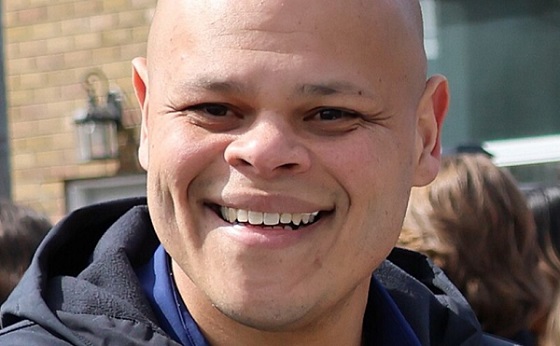Alberta
What My Brother’s Suicide Taught Me About Living

My brother Brett died 3,285 days ago today. 9 years. It feels like a hundred. It also feels like yesterday. But whereas others have moved on with their lives, I am one of the few left counting. Please don’t get me wrong, I am glad others have moved on. He would be glad too. But my life and how I see it has changed forever.
The morning I learned of my brother’s passing was a day I will never forget. I miss him very much and at times I am still overwhelmed with enormous grief and paralyzing sadness. All these year later when I think about him, warm tears instantly well up in my eyes and roll down my cheeks.
Typically, those feelings catch me off guard: a song, a memory, a family event like our Uncle’s 70th birthday last year where for me his absence is always felt. Or a wedding or the birth of a baby, events that bring so much joy and happiness, yet I always remember that my brother will never experience two of those life’s greatest moments.
It may not make sense to some but my most of my hardest hitting moments are at times when I am happy, not times when I am sad. I am forever left with the feeling of “I wish my brother was here.”
The last time I saw my brother is etched forever in my mind.
A surprise 43rd birthday party for me in December of 2011 filled with love and laughter. That cold, snowy evening ended as usual—a hug, a kiss on the cheek.
“I love you,” I whispered in my brother’s ear.
“I love you, too,” Brett replied to me, like a thousand times before.
That was the last time I would ever see my brother.
Nine years ago, a little after 3 a.m., on March 19, 2012, I was awoken by my husbands’ words, “Jodee, I think someone is here.” I still remember vividly the image of four black pant legs with yellow stripes on the doorstep as my husband opened the front door.
My brother had taken his own life.
The World Health Organization estimates that each year approximately 800,000 people die from suicide, which accounts for one death every 40 seconds. Some sources predict that by 2021 that will increase to one death every 20 seconds.
These deaths are our sons, daughters, moms, dads, husbands, wives, brothers, sisters, aunts, uncles, friends, neighbors, and co-workers. And in the approximately five minutes it takes you to read this article, seven people will have taken their life. Seven families, friends and loved ones will very shortly feel a pain like no other, their lives changed forever.
My brother’s death taught me so much, not about dying but about living. I try to remember to cherish life every day, to be open-minded, empathetic, and understanding, and to tell the ones I care about that I love them. I strive and am successful in not being bitter, angry and blaming as those emotions serve no purpose other than to break my spirit and keep me stuck. I work hard to remember that not everyone has the same opinion, that we all experience life and the circumstances surrounding it differently. So, I never get argumentative when others do not agree with my perspective. They have not lived my life, nor I theirs. Without realizing it, my brother and his complicated journey taught me that you never know what someone else may be going through, so I try to be kind.
Because of my brother and his absence, the beauty of life is always fresh in my mind.
It doesn’t mean that I don’t wish he was here, or that I don’t love him. It doesn’t mean I’m not feeling an underlying sense of sadness. But in his memory, I try to appreciate and enjoy life everyday.
I have made a conscious choice to celebrate how precious life is. That it is filled with so much beauty at the same time can be filled with heartache, challenges and hardship. I am blessed to live in the small town of Sylvan Lake; the water brings me joy and peace. It always has, which I believe stems from my childhood with my brother. Family vacations where we were blissfully happy and constantly in the water.
As much as I can I breathe the fresh Alberta air; I swim in the water and feel the warmth of sunshine on my face. I love the sand between my toes. Because of my brother, I remember how short life is and you can’t take any day for granted. You never know what tomorrow may bring. In fact, you never know if there will be a tomorrow at all.
Today, I celebrate the lives and memory of everyone who has lost their lives to suicide and the families that love them.
Today, my sweet brother, I celebrate the memory and love I have for you.
Jodee Prouse is a sister, wife, mom, and author of the powerful memoir, The Sun is Gone: A Sister Lost in Secrets Shame & Addiction & How I Broke Free. She is an outspoken advocate to help eliminate the shame & stigma surrounding addiction & Mental Illness. Follow her on facebook @jodeetisdaleprouse
If you or someone you know needs help, call the Canadian Suicide Prevention Service at 1-833-456-4566. If you think someone is in immediate danger, do not leave them alone, stay with them and call 911.
Alberta
The case for expanding Canada’s energy exports

From the Canadian Energy Centre
For Canada, the path to a stronger economy — and stronger global influence — runs through energy.
That’s the view of David Detomasi, a professor at the Smith School of Business at Queen’s University.
Detomasi, author of Profits and Power: Navigating the Politics and Geopolitics of Oil, argues that there is a moral case for developing Canada’s energy, both for Canadians and the world.
CEC: What does being an energy superpower mean to you?
DD: It means Canada is strong enough to affect the system as a whole by its choices.
There is something really valuable about Canada’s — and Alberta’s — way of producing carbon energy that goes beyond just the monetary rewards.
CEC: You talk about the moral case for developing Canada’s energy. What do you mean?
DD: I think the default assumption in public rhetoric is that the environmental movement is the only voice speaking for the moral betterment of the world. That needs to be challenged.
That public rhetoric is that the act of cultivating a powerful, effective economic engine is somehow wrong or bad, and that efforts to create wealth are somehow morally tainted.
I think that’s dead wrong. Economic growth is morally good, and we should foster it.
Economic growth generates money, and you can’t do anything you want to do in social expenditures without that engine.
Economic growth is critical to doing all the other things we want to do as Canadians, like having a publicly funded health care system or providing transfer payments to less well-off provinces.
Over the last 10 years, many people in Canada came to equate moral leadership with getting off of oil and gas as quickly as possible. I think that is a mistake, and far too narrow.
Instead, I think moral leadership means you play that game, you play it well, and you do it in our interest, in the Canadian way.
We need a solid base of economic prosperity in this country first, and then we can help others.
CEC: Why is it important to expand Canada’s energy trade?
DD: Canada is, and has always been, a trading nation, because we’ve got a lot of geography and not that many people.
If we don’t trade what we have with the outside world, we aren’t going to be able to develop economically, because we don’t have the internal size and capacity.
Historically, most of that trade has been with the United States. Geography and history mean it will always be our primary trade partner.
But the United States clearly can be an unreliable partner. Free and open trade matters more to Canada than it does to the U.S. Indeed, a big chunk of the American people is skeptical of participating in a global trading system.
As the United States perhaps withdraws from the international trading and investment system, there’s room for Canada to reinforce it in places where we can use our resource advantages to build new, stronger relationships.
One of these is Europe, which still imports a lot of gas. We can also build positive relationships with the enormous emerging markets of China and India, both of whom want and will need enormous supplies of energy for many decades.
I would like to be able to offer partners the alternative option of buying Canadian energy so that they are less reliant on, say, Iranian or Russian energy.
Canada can also maybe eventually help the two billion people in the world currently without energy access.
CEC: What benefits could Canadians gain by becoming an energy superpower?
DD: The first and primary responsibility of our federal government is to look after Canada. At the end of the day, the goal is to improve Canada’s welfare and enhance its sovereignty.
More carbon energy development helps Canada. We have massive debt, an investment crisis and productivity problems that we’ve been talking about forever. Economic and job growth are weak.
Solving these will require profitable and productive industries. We don’t have so many economic strengths in this country that we can voluntarily ignore or constrain one of our biggest industries.
The economic benefits pay for things that make you stronger as a country.
They make you more resilient on the social welfare front and make increasing defence expenditures, which we sorely need, more affordable. It allows us to manage the debt that we’re running up, and supports deals for Canada’s Indigenous peoples.
CEC: Are there specific projects that you advocate for to make Canada an energy superpower?
DD: Canada’s energy needs egress, and getting it out to places other than the United States. That means more transport and port facilities to Canada’s coasts.
We also need domestic energy transport networks. People don’t know this, but a big chunk of Ontario’s oil supply runs through Michigan, posing a latent security risk to Ontario’s energy security.
We need to change the perception that pipelines are evil. There’s a spiderweb of them across the globe, and more are being built.
Building pipelines here, with Canadian technology and know-how, builds our competitiveness and enhances our sovereignty.
Economic growth enhances sovereignty and provides the resources to do other things. We should applaud and encourage it, and the carbon energy sector can lead the way.
Agriculture
Growing Alberta’s fresh food future

A new program funded by the Sustainable Canadian Agricultural Partnership will accelerate expansion in Alberta greenhouses and vertical farms.
Albertans want to keep their hard-earned money in the province and support producers by choosing locally grown, high-quality produce. The new three-year, $10-milllion Growing Greenhouses program aims to stimulate industry growth and provide fresh fruit and vegetables to Albertans throughout the year.
“Everything our ministry does is about ensuring Albertans have secure access to safe, high-quality food. We are continually working to build resilience and sustainability into our food production systems, increase opportunities for producers and processors, create jobs and feed Albertans. This new program will fund technologies that increase food production and improve energy efficiency.”
“Through this investment, we’re supporting Alberta’s growers and ensuring Canadians have access to fresh, locally-grown fruits and vegetables on grocery shelves year-round. This program strengthens local communities, drives innovation, and creates new opportunities for agricultural entrepreneurs, reinforcing Canada’s food system and economy.”
The Growing Greenhouses program supports the controlled environment agriculture sector with new construction or expansion improvements to existing greenhouses and vertical farms that produce food at a commercial scale. It also aligns with Alberta’s Buy Local initiative launched this year as consumers will be able to purchase more local produce all year-round.
The program was created in alignment with the needs identified by the greenhouse sector, with a goal to reduce seasonal import reliance entering fall, which increases fruit and vegetable prices.
“This program is a game-changer for Alberta’s greenhouse sector. By investing in expansion and innovation, we can grow more fresh produce year-round, reduce reliance on imports, and strengthen food security for Albertans. Our growers are ready to meet the demand with sustainable, locally grown vegetables and fruits, and this support ensures we can do so while creating new jobs and opportunities in communities across the province. We are very grateful to the Governments of Canada and Alberta for this investment in our sector and for working collaboratively with us.”
Sustainable Canadian Agricultural Partnership (Sustainable CAP)
Sustainable CAP is a five-year, $3.5-billion investment by federal, provincial and territorial governments to strengthen competitiveness, innovation and resiliency in Canada’s agriculture, agri-food and agri-based products sector. This includes $1 billion in federal programs and activities and $2.5 billion that is cost-shared 60 per cent federally and 40 per cent provincially/territorially for programs that are designed and delivered by provinces and territories.
Quick facts
- Alberta’s greenhouse sector ranks fourth in Canada:
- 195 greenhouses produce $145 million in produce and 60 per cent of them operate year-round.
- Greenhouse food production is growing by 6.2 per cent annually.
- Alberta imports $349 million in fresh produce annually.
- The program supports sector growth by investing in renewable and efficient energy systems, advanced lighting systems, energy-saving construction, and automation and robotics systems.
Related information
-

 National1 day ago
National1 day agoLiberal bill “targets Christians” by removing religious exemption in hate-speech law
-

 Crime1 day ago
Crime1 day agoInside the Fortified Sinaloa-Linked Compound Canada Still Can’t Seize After 12 Years of Legal War
-

 Business1 day ago
Business1 day agoLooks like the Liberals don’t support their own Pipeline MOU
-

 Business2 days ago
Business2 days agoThe Climate-Risk Industrial Complex and the Manufactured Insurance Crisis
-

 Health2 days ago
Health2 days agoThe Data That Doesn’t Exist
-

 Business20 hours ago
Business20 hours agoConservative MP warns Liberals’ national AI plan could increase gov’t surveillance
-

 Business1 day ago
Business1 day agoCanada Can Finally Profit From LNG If Ottawa Stops Dragging Its Feet
-

 C2C Journal7 hours ago
C2C Journal7 hours agoWisdom of Our Elders: The Contempt for Memory in Canadian Indigenous Policy




